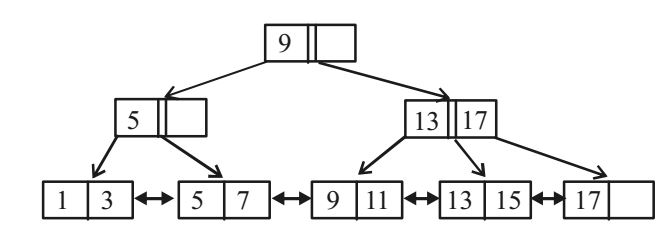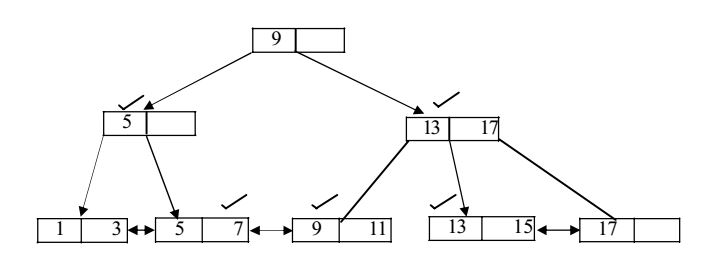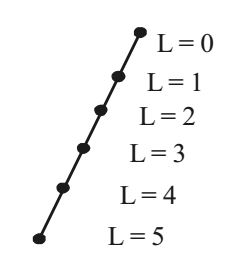Programming and data structure miscellaneous
- A binary tree T has 20 leaves. The number of nodes in T having two children is _____.
-
View Hint View Answer Discuss in Forum
Let the number of vertices of a binary tree with ‘p’ leaves be n then the tree has–
(i) p vertices (i.e., leaves) of degree 1
(ii) one vertex (i.e.., root of T) of degree 2
(iii) 'n - p -1' (i.e., interval) vertices of degree 3
(iv) n -1edges
∴ By Handshaking theorem, p × 1 + 1 × 2 + (n – p – 1) × 3 = 2 (n – 1)
⇒ n = 2p – 1
= 39 as p = 20
⇒ n – p =19 vertices have exactly two childrenCorrect Option: B
Let the number of vertices of a binary tree with ‘p’ leaves be n then the tree has–
(i) p vertices (i.e., leaves) of degree 1
(ii) one vertex (i.e.., root of T) of degree 2
(iii) 'n - p -1' (i.e., interval) vertices of degree 3
(iv) n -1edges
∴ By Handshaking theorem, p × 1 + 1 × 2 + (n – p – 1) × 3 = 2 (n – 1)
⇒ n = 2p – 1
= 39 as p = 20
⇒ n – p =19 vertices have exactly two children
- Consider a complete binary tree where the left and the right subtrees of the root are max-heaps. The lower bound for the number operations to convert the tree to a heap is
-
View Hint View Answer Discuss in Forum
NA
Correct Option: A
NA
- With reference to the B+ tree index of order 1 shown below, the minimum number of nodes (including the Root node) that must be fetched in order to satisfy the following query: "Get all records a search key greater than or equal to 7 and less than 15" is ____.

-
View Hint View Answer Discuss in Forum

Correct Option: C

- Which of the following is/are correct inorder traversal sequence(s) of binary search tree(s) ?
I. 3, 5, 7, 8, 15, 19, 25 II. 5, 8, 9, 12, 10, 15, 25
III. 2, 7, 10, 8, 14, 16, 20 IV. 4, 6, 7, 9, 18, 20, 25
-
View Hint View Answer Discuss in Forum
In-order traversal of binary search tree gives ascending orders and in BST, at every node root element is greater than and equal to all element present in left sub-tree and less than or equal to all the elements in right subtree.
Correct Option: A
In-order traversal of binary search tree gives ascending orders and in BST, at every node root element is greater than and equal to all element present in left sub-tree and less than or equal to all the elements in right subtree.
- The height of a tree is the length of the longest root-to-leaf path in it. The maximum and minimum number of nodes in a binary tree of height 5 are
-
View Hint View Answer Discuss in Forum
We know that the maximum no. of nodes in a binary tree with (height) h = 2h + 1 – 1.
Here h = 5, then, we easily calculate the h as :
h = 25 + 1 – 1= 64 – 1 = 63
And the minimum no. of nodes with height h is h + 1.
∴ h = 5
Correct Option: A
We know that the maximum no. of nodes in a binary tree with (height) h = 2h + 1 – 1.
Here h = 5, then, we easily calculate the h as :
h = 25 + 1 – 1= 64 – 1 = 63
And the minimum no. of nodes with height h is h + 1.
∴ h = 5

